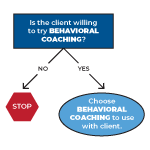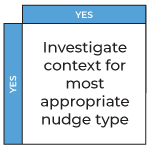
In his book The Paradox of Choice: Why Less is More, author Barry Schwartz identifies two personality types: Satisficers, who tend to be content with having just enough, and Maximizers, who continually strive to attain and achieve more, no matter how far they get. Given their different outlooks, Maximizers and Satisficers have strikingly different approaches to goal-setting and the expectations they set for themselves. Whereas Maximizers rarely (if ever) reach their goals because they are constantly striving to push for more, Satisficers can reach goals much more easily, as their sense of what they consider to be ‘good enough’ is much more attainable.
Interestingly, because of their constant drive to obtain and achieve more, Maximizers generally tend to be wealthier than Satisficers. Accordingly, financial advisors may commonly find themselves working with clients who are Maximizers, or who at least display Maximizer tendencies, with high expectations of achieving and attaining more from the financial planning relationship, whether it be through higher portfolio returns, optimized tax strategies, or even lower advisory fees. Yet, to maximize in all places, with all choices, and all at once is simply not possible. Which, for Maximizers, can be very upsetting. And naturally, they may consider their financial advisor (at least partly) to blame – as while they hired the advisor to help them maximize, they are still not maximizing! While the advisor understands that full maximization is not possible, it is hard to get the Maximizer client on the same page.
Luckily though, there are methods the advisor can use to maintain an amicable relationship with their client, and even help them minimize the regret they may associate with not being able to completely maximize their goals. For instance, encouraging the client to slow down and prioritize their goals can be an effective step to help them see that focusing on only one (or on a very few) goals at a time can lead to a greater chance of success in achieving that goal. Another key to working with Maximizers is to help them identify realistic comparison groups (or even using a past point in time to compare themselves to) so that they are not setting unrealistic expectations for themselves when seeking social proof through making comparisons to others. Finally, advisors can help Maximizers by managing their expectations, and even adjusting them as necessary.
Ultimately, while working with Maximizers may be a stressful experience for many financial advisors, these relationships don’t always have to be difficult. By implementing certain strategies, advisors can help their Maximizer clients have a more realistic view of their goals (and their drive to reach those goals), so that they can narrow their focus on what they value most, which, in the end, can help them minimize any regrets over unmet objectives and maximize their satisfaction from successfully achieving what matters most to them!











